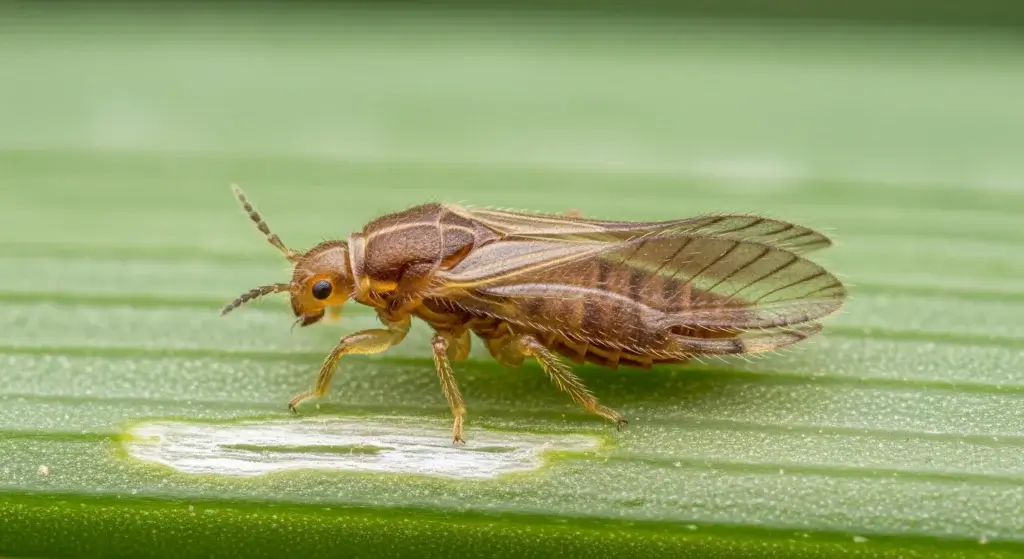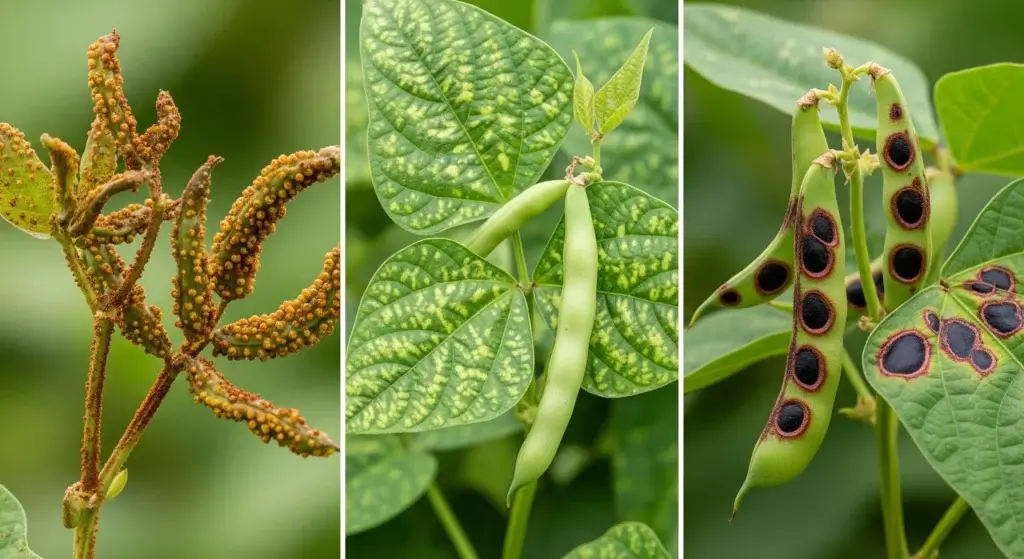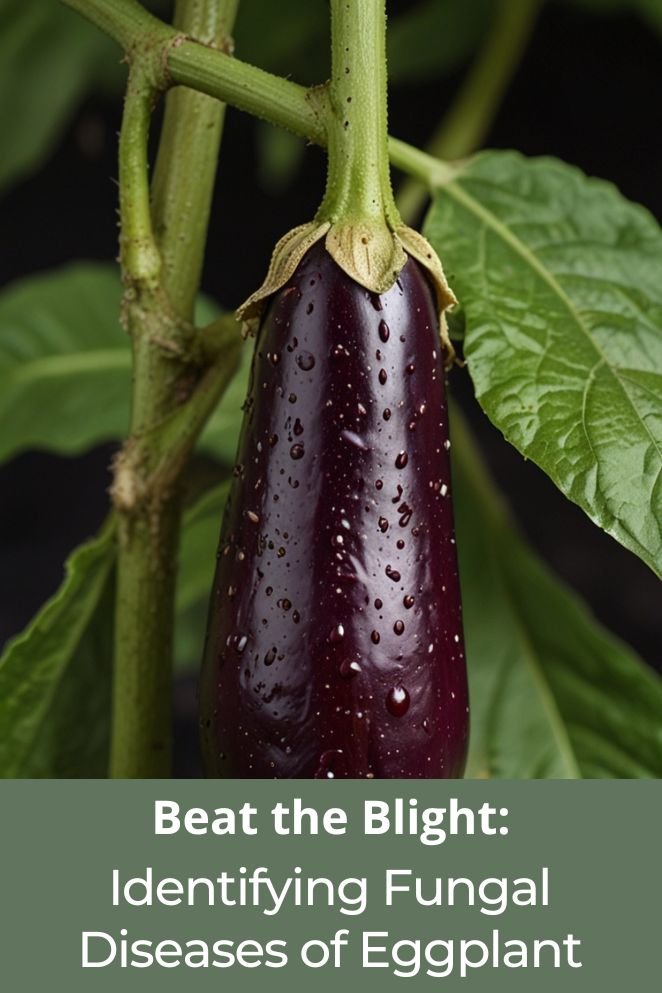
Eggplant is a popular vegetable in many parts of the world, known for its rich flavor and versatility in various dishes.
However, eggplant is susceptible to several fungal diseases that can significantly impact its growth and yield.
In this article, we will explore the common fungal diseases of eggplant, how to identify them, how to prevent them, and the treatment options available.
Common Fungal Diseases of Eggplant
Eggplants are vulnerable to various fungal diseases that can harm their growth and productivity.
Knowing about these diseases and how to identify them is essential for effective plant care.
Here are three prevalent fungal diseases that affect eggplants:
- Read also: Save Your Eggplant! Tips on Dealing With Whiteflies on Eggplant
- Read also: A Comprehensive Guide: Natural Pesticides for Vegetable Garden
Fusarium Wilt
Fusarium wilt, caused by the fungus Fusarium oxysporum, is a significant threat to eggplants.
This disease enters the plant through its roots, blocking the vascular system and causing wilting and eventual death.
Fusarium wilt typically starts with the lower leaves turning yellow and wilting, spreading upwards as the infection progresses.
Stunted growth and a general decline in plant health are also common symptoms.
Verticillium Wilt
Another fungal disease, Verticillium wilt, is caused by Verticillium dahliae.
Similar to Fusarium wilt, it enters the plant through the roots and disrupts the vascular system, leading to wilting and plant death.
Symptoms include wilting of one side of the plant, followed by yellowing or browning of leaves and eventual collapse.
Verticillium wilt is more prevalent in cooler temperatures and can persist in the soil for years, emphasizing the importance of crop rotation.
Anthracnose
Anthracnose, caused by various Colletotrichum species, primarily affects eggplant leaves and stems.
It presents as small, water-soaked lesions on the leaves, which enlarge into dark, sunken spots with rings.
Severe cases can lead to defoliation and weaken the plant, reducing yield.
Anthracnose thrives in warm, humid conditions, making sanitation and fungicide treatments crucial for prevention.
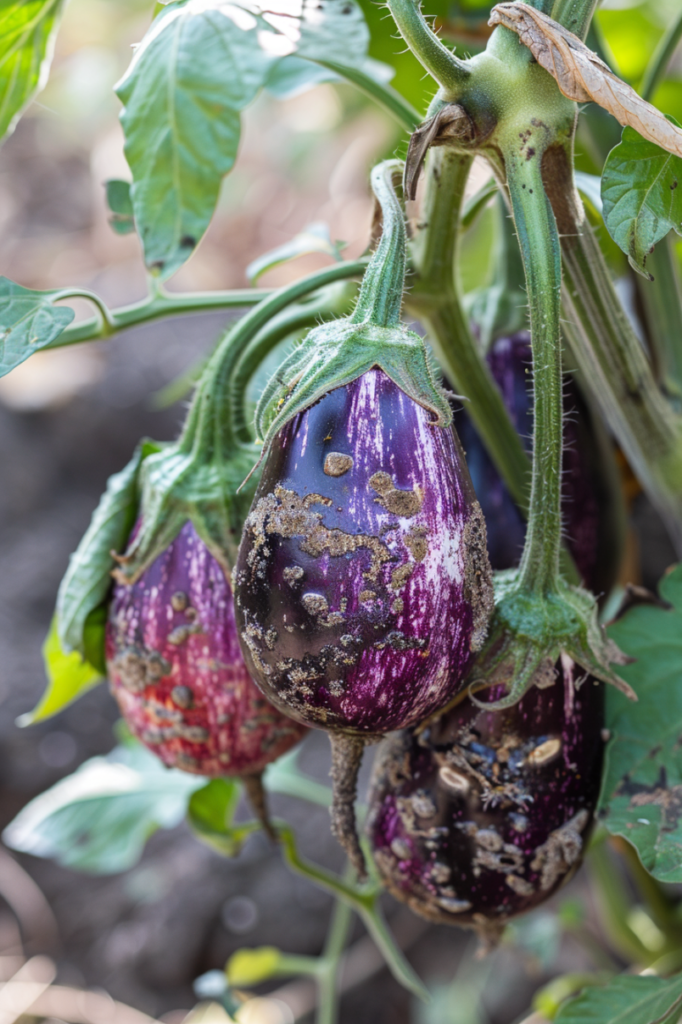
How to Identify Fungal Diseases of Eggplant
Identifying fungal diseases in eggplants is essential for effective management and prevention of crop damage.
Here are several methods to help you identify these diseases:
Visual inspection
Visual inspection is the primary method for identifying fungal diseases in eggplants.
Carefully examine the plants for any abnormal signs or symptoms, such as wilting, yellowing, or blackening of the leaves, stems, or fruit.
Look for patterns of discoloration or lesions, as well as any unusual growths or deformities.
These visual cues can provide valuable clues about the presence and severity of fungal infections.
Microscopic examination
Microscopic examination can be used to confirm the presence of fungal spores or hyphae on the plant.
Collect samples of affected plant tissue, such as leaves or stems, and prepare microscope slides for observation.
Use a microscope to examine the samples at high magnification, looking for characteristic structures of fungal pathogens.
These may include spores, hyphae, or other reproductive structures, which can help identify the specific type of fungus causing the disease.
Molecular testing
Molecular testing involves using advanced techniques to identify the specific fungal pathogen responsible for the disease.
This method is particularly useful for accurately diagnosing fungal infections and determining appropriate treatment strategies.
Molecular tests can detect the presence of fungal DNA or specific genetic markers associated with particular pathogens.
While this method may require specialized equipment and expertise, it can provide precise and reliable results for accurate disease diagnosis.
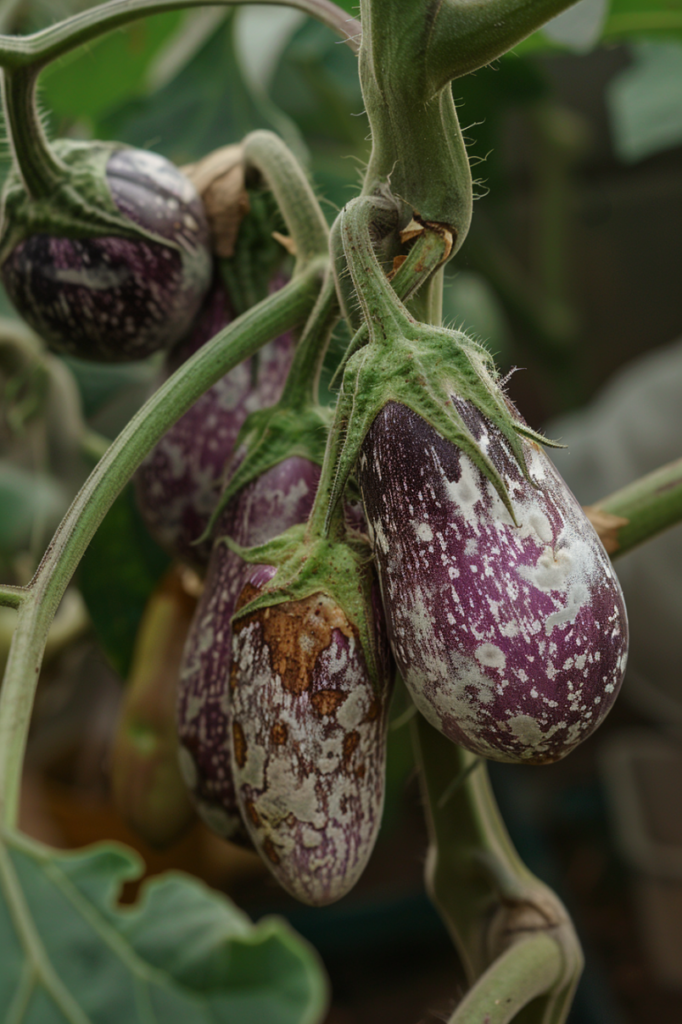
How to Prevent Fungal Diseases of Eggplant
Preventing fungal diseases in eggplants is crucial for maintaining healthy plants and maximizing yield.
Here are several effective strategies for prevention:
Crop rotation
Crop rotation involves growing different crops in the same area over successive seasons.
This practice helps disrupt the life cycle of fungal pathogens and reduces their buildup in the soil.
By rotating eggplants with non-host plants, growers can prevent the recurrence of fungal diseases and maintain soil health.
Soil disinfection
Soil disinfection is a method used to kill fungal pathogens present in the soil.
This can be achieved through various techniques such as solarization, steam sterilization, or chemical treatments.
Soil disinfection helps create a clean environment for growing eggplants and reduces the risk of fungal infections.
Resistant varieties
Using eggplant varieties that are resistant to fungal diseases can significantly reduce the likelihood of infection.
Resistant varieties have genetic traits that make them less susceptible to specific pathogens, providing built-in protection against fungal diseases.
Growers should select varieties known for their resistance to common eggplant fungal diseases in their region.
Good agricultural practices
Implementing good agricultural practices is essential for preventing fungal diseases in eggplants.
Proper irrigation practices, such as avoiding overhead watering and watering at the base of plants, can help reduce moisture levels and minimize fungal growth.
Regular pruning of infected plant parts and removing debris from the growing area can also prevent the spread of fungal pathogens.
Effective pest management strategies, such as controlling insect vectors that can transmit fungal spores, are also crucial for disease prevention.
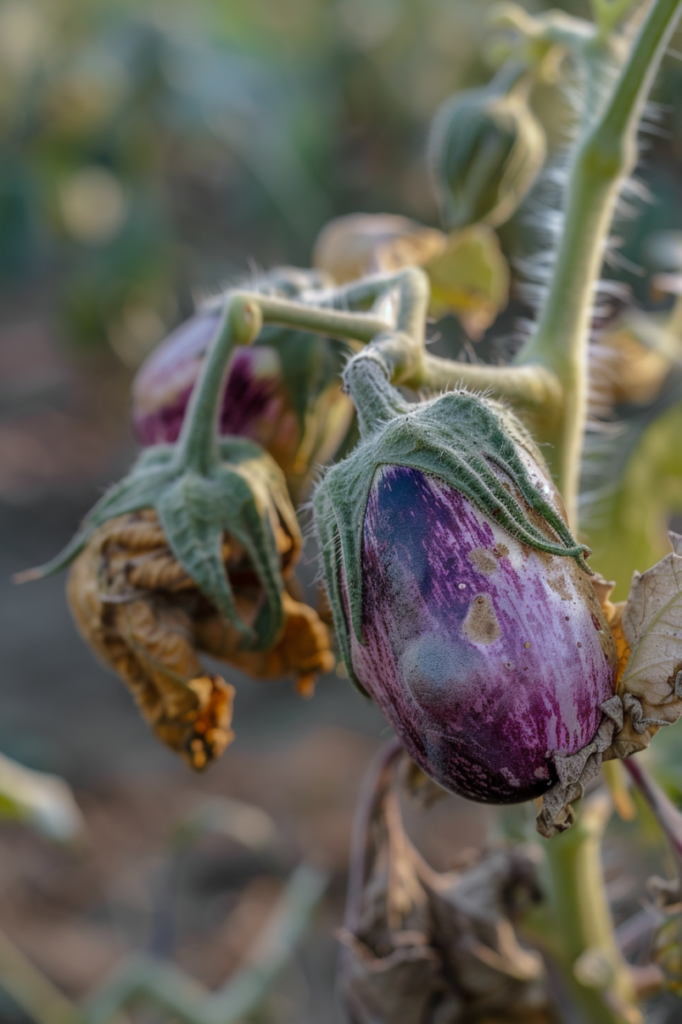
Treatment Options for Fungal Diseases of Eggplant
In addition to preventive measures, several treatment options can help control fungal diseases in eggplants:
Fungicides
Fungicides are chemical substances used to control fungal infections in plants.
They work by inhibiting fungal growth and reproduction, thus reducing disease severity.
Fungicides should be applied according to label instructions and in accordance with integrated pest management (IPM) principles to minimize environmental impact and resistance development.
Biological control
Biological control involves using beneficial microorganisms to suppress fungal pathogens.
These microorganisms, such as certain bacteria, fungi, or nematodes, can compete with or parasitize fungal pathogens, reducing their population and disease incidence.
Biological control methods are environmentally friendly and can be integrated into sustainable pest management programs.
Cultural control
Cultural control methods involve practices that disrupt the life cycle of fungal pathogens or reduce their spread within the plant or growing environment.
This can include measures such as pruning infected plant parts, improving air circulation around plants, and maintaining proper spacing between plants to reduce humidity levels.
Cultural control is an integral part of integrated disease management strategies and can help minimize reliance on chemical treatments.
- Read also: Eco-Friendly Pest Control – How To Make a Natural Pesticide
- Read also: Natural Pest Control Methods for Your Vegetable Garden
Conclusion
Fungal diseases of eggplant can significantly impact its growth and yield.
It is essential to identify, prevent, and treat these diseases to ensure a healthy and productive eggplant crop.
By understanding the common fungal diseases of eggplant, how to identify them, how to prevent them, and the treatment options available, growers can take steps to protect their eggplant crops and ensure a successful harvest.
FAQs
The common fungal diseases of eggplant include Fusarium wilt, Verticillium wilt, and anthracnose.
Fungal diseases of eggplant can be identified through visual inspection, microscopic examination, and molecular testing.
Fungal diseases of eggplant can be prevented through crop rotation, soil disinfection, using resistant varieties, and good agricultural practices.
The treatment options for fungal diseases of eggplant include fungicides, biological control, and cultural control.

